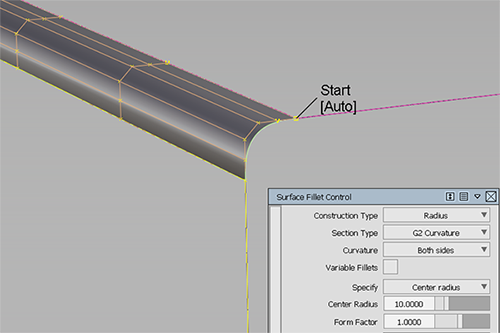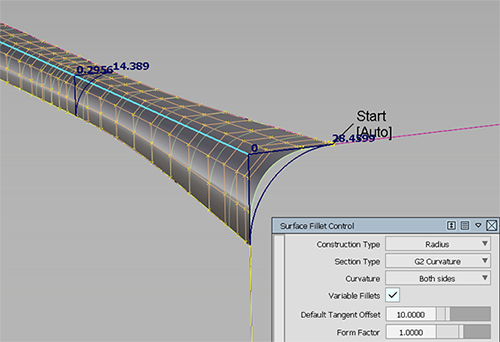Choose the type of a fillet surface
Set the options for the fillet tools based on the type of transition surface you need to build.
In the Surfaces tool palette, select the Surface Fillet tool , then the
, then the  icon to show the fillet control window.
icon to show the fillet control window.
The Construction Type and Variable Fillets options let you choose how the tool creates the fillet surface:
If Construction Type is set to Radius and Variable Fillets is turned off, the fillet maintains a constant radius along its entire length.

If Construction Type is set to Arc (Chord), Existing Theoretical, or Build Theoretical and Variable Fillets is turned off, the fillet maintains a constant width (chordal length) along its entire length.
 Note:
Note:The chordal length is the length of the straight line that joins both sides of the fillet, at a given U parameter value.

If Construction Type is set to Radius and Variable Fillets is turned on, you can set the radius at different points along the length of the fillet.

If Construction Type is set to Arc (Chord), Existing Theoretical, or Build Theoretical, and Variable Fillets is turned on, you can set the chordal length (or tangent length) at different points along the length of the fillet.

To create a fillet between surface curves (surface boundaries, trim edges, isoparametric curves, or curve-on-surface), select the Multi-Surface Blend > Freeform Blend tool  from the Surfaces tool palette.
from the Surfaces tool palette.
For more information, see Construction Type.
Related Tasks
- Create a fillet surface
- Control the radius along the length of a variable fillet surface
- Control the chordal length along a variable fillet surface